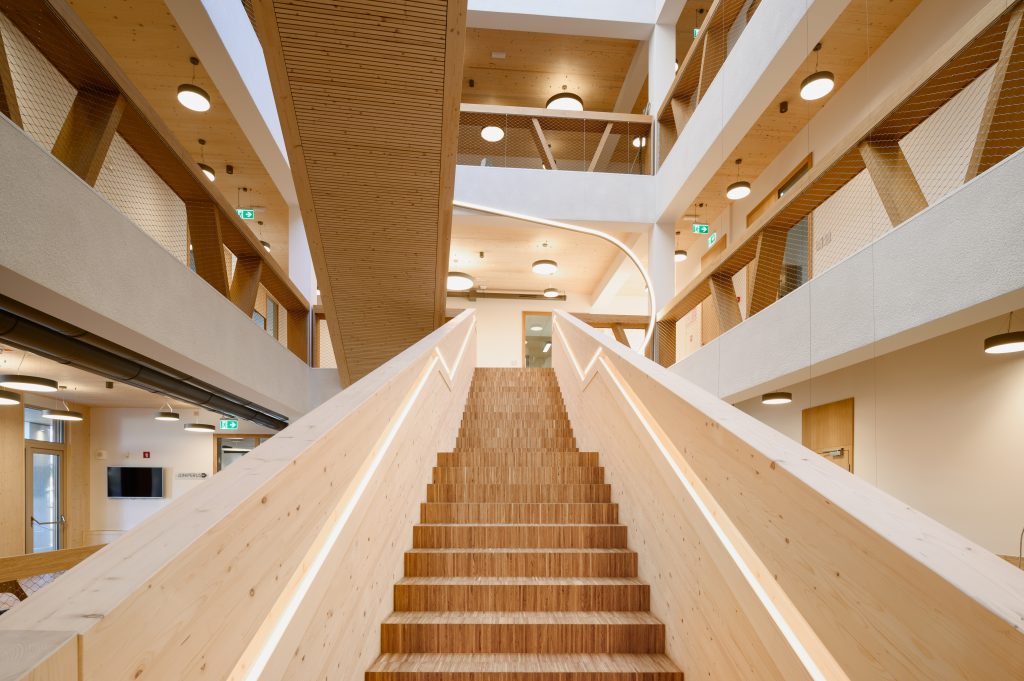
January 7, 2026

The most promising way to limit the negative impacts of the building industry is to force the use of wood, which is not only a renewable resource but also capable of sequestering carbon dioxide from the atmosphere. However, the environmental aspect is only one of the deciding factors that investors consider. The right approach to promote the use of wood in buildings is therefore to identify and address the drawbacks that come with it.
In this perspective, the most common prejudice is that wooden buildings suffer from low sound insulation. More specifically, it is a challenge to achieve high impact noise insulation because the structural elements are light, more sensitive to excitation, and generally lack sufficient damping that would restrain the propagation of vibrations. In the IRIS project, we see this as an engineering challenge – to investigate the potential of creating wooden composites based resilient layer to limit impact noise in buildings.
The core of the IRIS project is to use wood composites as a novel resilient layer for floating floors. In the first part of the project, such a layer was developed and several parameters crucial for its performance (dynamic stiffness, damping, load bearing capacity, etc.) were optimized. Prototypes were built and tested, while in parallel a physical model of the dynamic response of the new layer was developed.
In the following phases of the project, this layer will be further developed and tested under relevant conditions. This is usually done by measuring the impact noise with a standardized source – the tapping machine. The project is much more ambitious in this respect and will also test the new layer in different types of buildings, while using alternative sources of impact sound such as walking and jumping. Such sounds are what actually disturb people, and the IRIS project is paying special attention to annoying aspect of impact noise.
In the current phase of the project, we are designing and developing laboratory conditions under which sounds and vibrations recorded in the field can be reproduced with high accuracy. To this end, the higher order Ambisonics system is being adapted for specific use and a vibration exposure device is being developed. The user interface that guides users through the listening (and vibration!) tests will also be elaborated.
Such a laboratory reproduction system is an important research tool for IRIS, giving us insight into perceptual preferences. Most importantly, blind testing with users who do not know what building and insulation layers they are exposed can be performed. This allows us to avoid various aspects of bias that naturally occur when subjective response is investigated. A novelty of the reproduction approach is also to enable the discrimination between vibrations and noise, which has not yet been systematically applied in this research area. This will provide additional insight into the perception of noise at low frequencies at which the sound is experienced also trough the whole body vibrations.
A far-reaching potential outcome of the project is also a better understanding of subjective preferences for impact noise in relation to a particular building type, such as wooden or concrete. This will also provide reason for complaints about this type of noise in wooden buildings and challenge the established benchmarks – impact sound insulation levels – currently used to quantify building insulation performance, although they are known to be incomplete.
Dr. Rok Prislan, InnoRenew CoE researcher